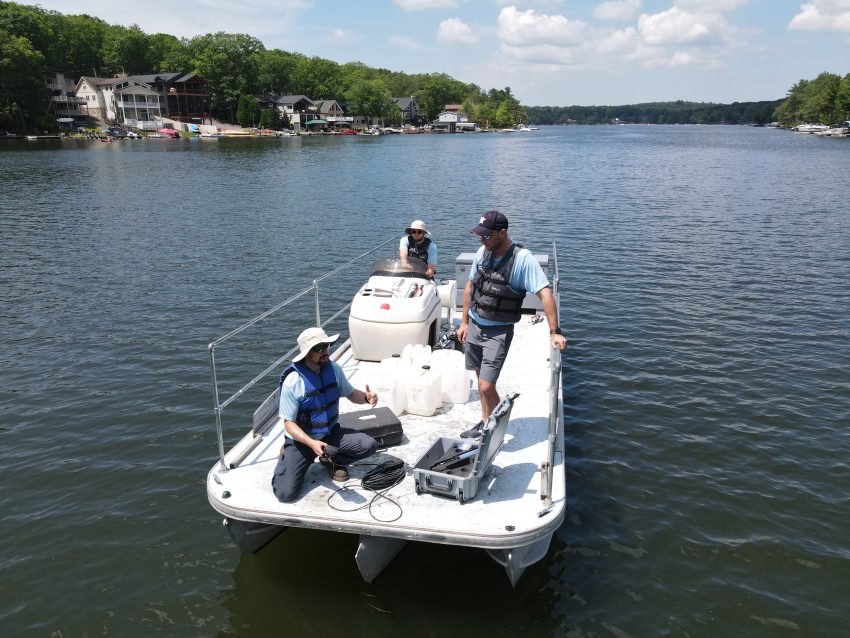For generations, Americans have embraced the Lake Lifestyle, a way of life centered around the beauty, recreation, and tranquility of our nation’s lakes. It serves as a gathering place for families, where memories are created, and daily stresses dissipate. Whether fishing, diving off the dock, or enjoying the scenic views, life by the lake offers a uniquely special experience.
Regrettably, this cherished lifestyle faces significant risk from eutrophication, a process where excess nutrients from fertilizers, septic systems, and stormwater runoff inundate lakes. This triggers a series of issues including harmful algal blooms, health risks, lake closures, unpleasant odors, unsightly scum, and falling property values as the lake’s desirability diminishes. When this situation arises, members of the Homeowners Association (HOA), Lake Board, or Committee hold the immense responsibility of making critical decisions to safeguard the community’s lake, efficiently allocate resources, and preserve the Lake Lifestyle for current and future generations.
“For many, determining the best path forward can be as unclear and murky as the lake itself. You have to understand and target the root causes of your lake’s issues. If they aren’t directly addressed, your investment is being wasted. A holistic, science-based strategy that tackles the underlying causes of the eutrophication of the lake is the only way to revitalize the entire ecosystem” says Dave Shackleton, president of Clean-Flo International, a US-based leader in biological water management solutions for managing water quality in biological environments such as wastewater treatment, rivers, lakes and reservoirs.
Effective restoration of lake and water reservoir health begins with monitoring key metrics that go beyond confirming the poor condition of the lake. These metrics should assess the entire ecosystem and provide indicators that can be used to evaluate sustained improvement.
“Only by carefully analyzing the intricate interplay of factors such as hypoxia, sediment accumulation, nutrient recycling, and negative transformations to the lake’s ecosystem can we craft targeted, customized strategies that tackle the root causes of the issues holistically,” explains Shackleton.
While the notion of quickly eradicating algae to improve the lake’s appearance by using biocidal chemicals is enticing, this can lead to a detrimental feedback loop that accelerates the deterioration of the lake’s ecosystem; the dead algae cells sink to the bottom to add to the sediment, the elimination of cyanobacteria can result in the release of toxins, and over time, the continued application of algaecides causes sediment nutrient stockpiles to increase, hypoxia to worsen and nutrient recycling to be amplified.
A proactive, holistic approach ensures the lake receives the care it needs for sustainable long-term health and resilience. Fortunately, there are effective, comprehensive solutions that leverage cutting-edge technologies and proven techniques. Oxygenation is key to preventing hypoxia. The Lake Management Action Plan should include specific actions designed to restore and maintain adequate oxygen levels throughout the lake.
Rapid Acting Dissolved Oxygen Restoration (RADOR) technology has been proven in numerous studies to oxygenate the whole water column, sustain high, stable, dissolved oxygen levels, reduce nutrient levels and minerals in the water column and can keep phosphorus locked into the organic sediments. Clean-Flo designs its RADOR systems using compressors of various sizes based on the lake and application, along with self-sinking airline and diffusers that ensure that no water sports or other fun activities are impacted and maintain full oxygenation from the bottom to the surface of the water.
As nutrients accumulate in the sediment, they become part of the permanent morphology of the lake. Therefore, an important step is to implement interventions that work off those nutrient rich sediments in the way nature intended, without physically having to dredge to remove them and then dump them safely somewhere at great cost.
Lake decision makers must demand clear, concise information to share with their stakeholders to demonstrate the value of their lake management investments.
“Lake Management Action Plans should include simple, easy to understand analyses, intuitive visualizations, and clear language with relevant results that accurately and objectively measure performance and improvements by measuring what matters,” concludes Shackleton.
For more information, visit www.clean-flo.com; email contact@clean-flo.com; or call 1-800-328-6656.

